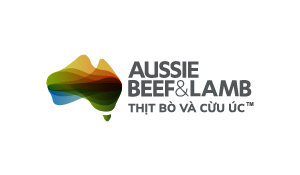How is lamb climate neutral?
Explore the efforts of the sheep meat industry to achieve carbon neutrality through sustainable food production methods in this informative article.
How is lamb climate neutral?
We all want to do our bit for the environment, and that includes making smart choices about the food we eat. Red meat production is often seen as bad for the planet, but the truth is, Aussie lamb is actually climate neutral. And that’s not just fancy PR, it’s science. Here’s a rundown of what climate neutral means and how it applies to the sheep meat industry.
Australia’s sheep meat industry is now considered ‘climate neutral’. In simple terms, this means that eating lamb doesn't contribute to further global temperature rise. To explain this concept further, let’s delve into the science a little more.
What does climate neutral mean… and is it different to carbon neutral?
‘Climate neutral’ means that a process or industry does not cause additional global temperature rise due, in part, to a reduction in methane emissions. While the Australian lamb production sector produces greenhouse gas (GHG) emissions (mainly through the methane that sheep emit), since 1990, emissions have declined substantially and carbon storage in grazing lands has increased. That means that on balance, the industry isn’t contributing to additional global temperature rise.
‘Carbon neutral’, on the other hand, refers to net zero GHG emissions. Reaching a carbon neutral position requires anthropogenic (human-caused) releases of GHG emissions to the atmosphere to be balanced with anthropogenic removals over a specified time period, typically annually. Some Australian livestock producers, like Jigsaw Farms, are already carbon neutral. So, climate neutral can be seen as a step on the path to achieving a carbon neutral position.
How is climate neutral determined?
In 2020, the CSIRO published research which analysed annual Australian GHG emission data from 1990 to 2017 in relation to the Australian sheep meat industry. The aim of the research was to measure the industry’s ‘radiative forcing’ footprint, which is the influence a given climatic factor has on the amount of downward-directed radiant energy impinging upon Earth’s surface. This is important because the goal of limiting mean global temperature rise to 1.5°C, as outlined in the 2015 Paris Agreement, depends upon urgent action to stabilise radiative forcing.
The research shows that the radiative forcing footprint of Australia’s sheep meat industry has plateaued over the past 30 years and reached a status that could be described as ‘climate neutral’.
In fact, the climate impact of the sheep meat industry is trending downwards due to the decrease in the sector’s methane emissions, from 371 kt in 1990 to 290 kt in 2017. In other words, from this point onwards, the industry’s radiative forcing is projected to be in decline.
How has this been achieved? Well, since 1990, Australian lamb producers have been able to make incremental increases in their annual output of live weight, while decreasing methane emissions, by improving meat production from the same number of sheep. If this productivity continues, the sheep meat industry’s radiative forcing footprint will be reduced even further.
What is the sheep meat industry doing to reduce net emissions?
Australian lamb producers, along with other red meat producers, are focused on achieving the industry’s goal of becoming carbon neutral by 2030 (CN30). CN30 means the Australian red meat and livestock industry will make no net release of GHG emissions into the atmosphere by 2030, as measured by the Australian Government’s National Greenhouse Gas Inventory (NGHGI).
The Australian red meat industry’s Carbon Neutral by 2030 (CN30) Roadmap sets out how the industry will proactively address emissions and become a global leader in sustainable food production. On sheep meat farms around Australia, net emissions are being reduced through:
- Improvements in feeding practices (better pastures, new types of supplements)
- Improved genetics and animal management
- Storing carbon in grazing land using various plants and animals
- Using renewable energy technology such as biomethane and solar.
Aussie lamb is certainly leading the way in climate neutral food production, and for that it deserves a pat on the back. But it’s not just about recognition. By helping Australia achieve its international commitments on climate change, the industry is showing other food producers all over the world that climate neutral red meat production is achievable. So, include some delicious Aussie lamb at your next barbeque, and don’t forget to tell your guests that by eating it, they’re helping in the fight against climate change.

